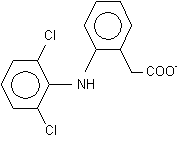An expert panel has recommended five different kinds of drugs that are suitable for treating neuropathy pain in some patients. The review and recommendations were published in the November issue of Archives of Neurology(l). These guidelines mention HIV but are not HIV-specific. They are available free on the Web (at least when we checked on December 1, 2003) at: http://archneur.ama-assn.org/cgi/content/full/60/11/1524
From the article:
"First-lineMedications. The efficacy of gabapentin, the 5% lidocaine patch, opioid analgesics, tramadol hydrochloride, and tricyclic antidepressants (TCAs) has been consistently demonstrated in multiple randomized controlled trials. Each one can be used as an initial treatment for neuropathic pain in certain clinical circumstances. Opioid analgesics and TCAs generally require greater caution than the other options. For each of these 5 medications, brief reviews of the relevant randomized clinical trials and specific treatment recommendations follow. Treatment recommendations are summarized in Table 2."
Not recommended but sometimes used are NSAIDS; many experts believe they are not effective for this kind of pain.
(However, AIDS Treatment News has heard anecdotal reports of relief with Voltaren Emulgel, an NSAID in a topical formulation. The topical form is not sold in the U.S., but may be available from Internet pharmacies for under $20. See our 1999 article at: http://www.aids.org/atn/a-321-01.html)
The same issue of Archives of Neurology also has an article on surgical treatment for neuropathy pain(2), and an editorial(3).
References
(1.) Dworkin RH, Backonja M, Rowbotham MC, and others. Advances in Neuropathic Pain: Diagnosis, Mechanisms, and Treatment Recommendations. Archives of Neurology. November 2003; volume 60, number 11, pages 1524-1534
2. Giller CA. The Neurosurgicai Treatment of Pain. Archives of Neurology. November 2003; volume 60, number 11, pages 1537-1540.
3. Rosenberg RN. Pain 2003. Archives of Neurology. November 2003; volume 60, number 11, page 1520.
COPYRIGHT 2003 John S. James
COPYRIGHT 2003 Gale Group



